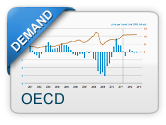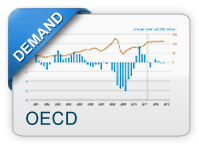Energy & Financial Markets
WHAT DRIVES CRUDE OIL PRICES?
An analysis of 7 factors that influence oil markets, with chart data updated monthly and quarterly
What drives crude oil prices: Demand OECD
The Organization of Economic Cooperation and Development (OECD) consists of the United States, much of Europe, and other advanced countries. At 53 percent of world oil consumption in 2010, these large economies consume more oil than the non-OECD countries, but have much lower oil consumption growth. Oil consumption in the OECD countries actually declined in the decade between 2000 and 2010, whereas non-OECD consumption rose 40 percent during the same period.
consumption
Structural conditions in each country's economy influence the relationships among oil prices, economic growth, and oil consumption. Developed countries tend to have higher vehicle ownership per capita. Because of this, oil use within the OECD transportation sector usually accounts for a larger share of total oil consumption than in non-OECD countries; it is also more mature and slower-growing. Economic conditions and policies that affect the transport of goods and people thus have a significant impact on total oil consumption in OECD countries. Many OECD countries have higher fuel taxes and policies to improve the fuel economy of new vehicles and increase the use of biofuels. This tends to slow the growth in oil consumption even in times of strong economic growth. Furthermore, the economies in OECD countries tend to have larger service sectors relative to manufacturing. As a result, strong economic growth in these countries may not have the same impact on oil consumption as it would in non-OECD countries.
OECD countries tend to have fewer subsidies on end-use prices, so changes in market oil prices are often quickly reflected in prices faced by consumers. However, it takes time for people to adjust their transportation routines and for the vehicle stock to turn over and become more energy-efficient in response to price changes.
Changes in expected future oil prices also affect consumers' decisions concerning modes of transportation and vehicle purchases. If prices are expected to remain high or increase in the future, more consumers may decide to purchase more fuel efficient vehicles or use public transportation. Decisions like these help to reduce future oil demand and would tend to moderate expected price increases.














